VW Polo VS VW T-Roc – Specs, Efficiency & Price Comparison
Which model is the better choice – the VW Polo or the VW T-Roc? We compare performance (207 HP vs 300 HP), boot capacity (351 L vs 445 L), efficiency (5.10 L vs 4.70 L), and of course, the price (17000 £ vs 23900 £).
Find out now which car fits your needs better!
The VW Polo (Hatchback) is powered by a Petrol engine and comes with a Manuel or Automatic transmission. In comparison, the VW T-Roc (SUV) features a Petrol or Diesel engine and a Manuel or Automatic gearbox.
When it comes to boot capacity, the VW Polo offers 351 L, while the VW T-Roc provides 445 L – depending on what matters most to you. If you’re looking for more power, you’ll need to decide whether the 207 HP of the VW Polo or the 300 HP of the VW T-Roc suits your needs better.
There are also differences in efficiency: 5.10 L vs 4.70 L. In terms of price, the VW Polo starts at 17000 £, while the VW T-Roc is available from 23900 £.
Compare all the key specs now and find out which model fits your lifestyle best!
When comparing the VW Polo and the VW T-Roc, drivers will find distinct differences in style and functionality. The Polo excels with its compact design and agile handling, making it ideal for city driving, while the T-Roc offers a more rugged SUV look paired with a versatile interior and higher ride height. Ultimately, the choice between the two comes down to individual lifestyle needs, whether prioritizing nimbleness or a more adventurous stance on the road.
VW Polo
The VW Polo remains a popular choice in the compact car segment, known for its sleek design and sophisticated styling. Inside, it offers a surprisingly spacious cabin with high-quality materials and intuitive technology features, ensuring a comfortable driving experience. Its agile handling and responsive performance make it an excellent option for both city commuting and longer journeys.
details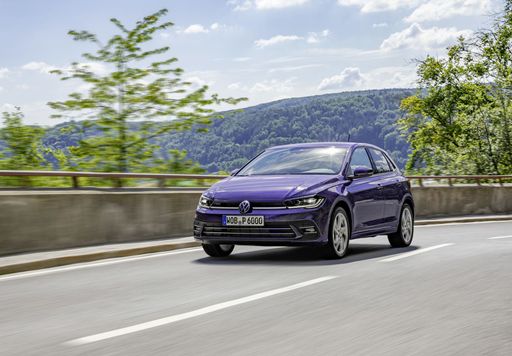 @ Volkswagen
@ Volkswagen
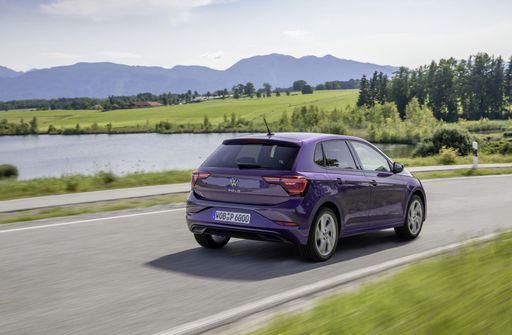 @ Volkswagen
@ Volkswagen
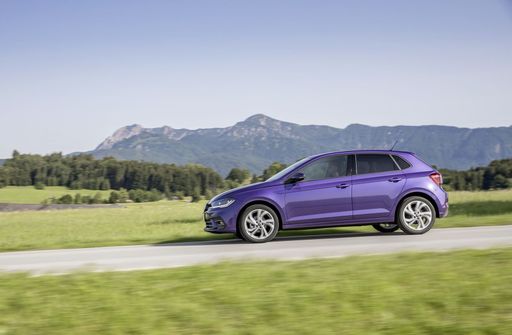 @ Volkswagen
@ Volkswagen
 @ Volkswagen
@ Volkswagen
 @ Volkswagen
@ Volkswagen
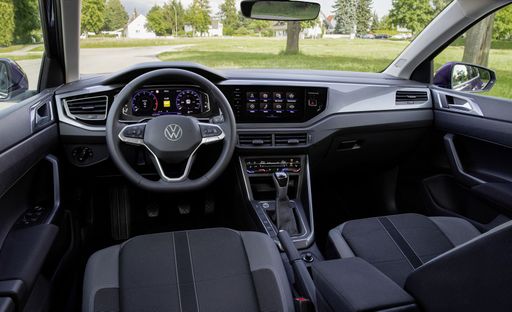 @ Volkswagen
@ Volkswagen
VW T-Roc
The VW T-Roc seamlessly blends stylish design with practical functionality, making it an ideal choice for those who enjoy both urban and countryside driving. Its modern interior features intuitive technology and comfortable seating, enhancing the overall driving experience. With its robust build and dynamic performance, the T-Roc is equipped to handle various road conditions with confidence.
details @ Volkswagen
@ Volkswagen
 @ Volkswagen
@ Volkswagen
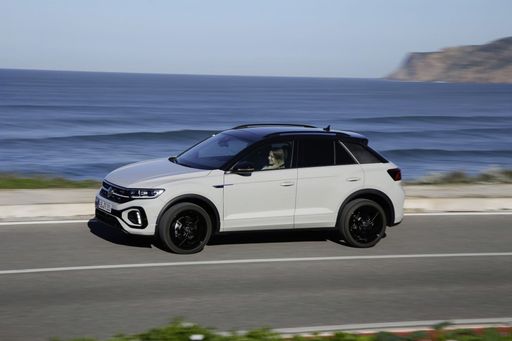 @ Volkswagen
@ Volkswagen
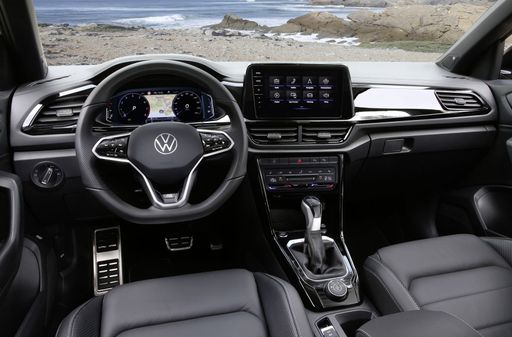 @ Volkswagen
@ Volkswagen
The automotive market is brimming with options, but when it comes to comparisons, few pairs offer as much versatile appeal as the VW Polo and the VW T-Roc. While both vehicles are designed by the same manufacturer, they cater to different segments of the market, providing distinct advantages tailored to various lifestyles and needs.
Design & Body Type: Hatchback vs. SUV
The VW Polo is a classic hatchback, renowned for its compact size and agile handling. Measuring 4,074 mm in length and 1,751 mm in width, it is perfectly suited for urban environments and tight parking spaces. Its sleek profile boasts a height of 1,451 mm, contributing to both its sporty aesthetic and practicality.
In contrast, the VW T-Roc brings the robust characteristics of an SUV into play. With dimensions of 4,236 mm to 4,271 mm in length and 1,811 mm in width, it offers a higher driving position and an inherent sense of authority on the road. Its height ranges from 1,527 mm to 1,584 mm, which not only improves visibility but also provides ample cargo space in its trunk, measuring up to 445 liters.
Power & Performance: Engine Options and Output
When diving into the technical aspects, both vehicles present various engine options to cater to diverse driving preferences. The Polo offers a range of petrol engines, producing between 80 HP and 207 HP, and features efficient fuel consumption, ranging from 5.2 to 6.5 L/100km. Its sprint capabilities are impressive, with the top model achieving 0-100 km/h in just 6.5 seconds.
On the other hand, the T-Roc provides a broader selection of engine choices, including both petrol and diesel options. The horsepower figures span from 115 HP to a thrilling 300 HP in the high-performance variants. Fuel consumption for the T-Roc varies significantly, with figures starting at 4.7 L/100km for more economical models, demonstrating its versatility based on engine choice.
Technology & Innovations: A Leap Ahead
In terms of technology, both the Polo and the T-Roc are equipped with modern features expected in contemporary vehicles. The Polo boasts advanced infotainment systems with seamless smartphone integration, along with a suite of safety features including lane assist and emergency braking. Its compact design allows for user-friendly systems that are easy to navigate while on the go.
The T-Roc, however, steps it up a notch with its larger touchscreen displays and additional features designed for an SUV driver. It comes with an available Virtual Cockpit option that transforms the driver’s display into a fully customizable digital interface. This not only enhances connectivity but also places critical driving information directly in the driver's line of sight.
Driving Dynamics: Handling & Comfort
Driving dynamics are essential in comparing these two models. The Polo’s front-wheel-drive system and lighter curb weight—ranging from 1,138 kg to 1,372 kg—provide nimble handling and a responsive driving experience. It is designed for agility and comfort, making it a favorite among urban drivers.
In contrast, the T-Roc offers a choice between front-wheel drive and all-wheel drive, which enhances traction, especially on challenging terrains. With a heavier curb weight that varies from 1,304 kg to 1,578 kg, it presents a more robust feel, perfect for those looking to venture off the beaten path while still enjoying city versatility.
Conclusion: Which One Is Right for You?
Ultimately, the decision between the VW Polo and the VW T-Roc truly depends on personal preferences and lifestyle needs. The Polo is ideal for city dwellers and those seeking an efficient, agile hatchback. On the other hand, the T-Roc caters to those looking for a more commanding presence on the road, with greater versatility for families or outdoor adventures.
Both vehicles showcase VW’s commitment to innovation and quality, ensuring that whether you choose the Polo or the T-Roc, you will be investing in a reliable and enjoyable driving experience.

|

|
|
|
|
Costs and Consumption |
|
|---|---|
|
Price
17000 - 30400 £
|
Price
23900 - 45500 £
|
|
Consumption L/100km
5.1 - 6.5 L
|
Consumption L/100km
4.7 - 8.4 L
|
|
Consumption kWh/100km
-
|
Consumption kWh/100km
-
|
|
Electric Range
-
|
Electric Range
-
|
|
Battery Capacity
-
|
Battery Capacity
-
|
|
co2
116 - 149 g/km
|
co2
125 - 191 g/km
|
|
Fuel tank capacity
40 L
|
Fuel tank capacity
50 - 55 L
|
Dimensions and Body |
|
|---|---|
|
Body Type
Hatchback
|
Body Type
SUV
|
|
Seats
5
|
Seats
4 - 5
|
|
Doors
5
|
Doors
2 - 5
|
|
Curb weight
1143 - 1378 kg
|
Curb weight
1304 - 1567 kg
|
|
Trunk capacity
351 L
|
Trunk capacity
284 - 445 L
|
|
Length
4074 mm
|
Length
4236 - 4271 mm
|
|
Width
1751 mm
|
Width
1811 - 1819 mm
|
|
Height
1431 - 1451 mm
|
Height
1527 - 1584 mm
|
|
Payload
432 - 457 kg
|
Payload
368 - 516 kg
|
Engine and Performance |
|
|---|---|
|
Engine Type
Petrol
|
Engine Type
Petrol, Diesel
|
|
Transmission
Manuel, Automatic
|
Transmission
Manuel, Automatic
|
|
Transmission Detail
Schaltgetriebe, Automat. Schaltgetriebe (Doppelkupplung)
|
Transmission Detail
Schaltgetriebe, Automat. Schaltgetriebe (Doppelkupplung)
|
|
Drive Type
Front-Wheel Drive
|
Drive Type
Front-Wheel Drive, All-Wheel Drive
|
|
Power HP
80 - 207 HP
|
Power HP
115 - 300 HP
|
|
Acceleration 0-100km/h
6.5 - 15.6 s
|
Acceleration 0-100km/h
4.9 - 12.3 s
|
|
Max Speed
171 - 240 km/h
|
Max Speed
187 - 250 km/h
|
|
Torque
93 - 320 Nm
|
Torque
200 - 400 Nm
|
|
Number of Cylinders
3 - 4
|
Number of Cylinders
3 - 4
|
|
Power kW
59 - 152 kW
|
Power kW
85 - 221 kW
|
|
Engine capacity
999 - 1984 cm3
|
Engine capacity
999 - 1984 cm3
|
General |
|
|---|---|
|
Model Year
2024
|
Model Year
2024
|
|
CO2 Efficiency Class
D, E
|
CO2 Efficiency Class
D, E, F, G
|
|
Brand
VW
|
Brand
VW
|
VW Polo
Unveiling the VW Polo: A Compact Car with Big Ambition
The VW Polo, with its sleek hatchback design, stands out in the compact car segment, offering a blend of practicality and innovation. Volkswagen has continued to refine this popular model, ensuring that each new iteration provides cutting-edge technology and enhanced driving dynamics.
A Closer Look at the Mechanics
Under the bonnet, the VW Polo offers a series of efficient petrol engines ranging from 80 to 207 horsepower. These engines, coupled with either a manual or dual-clutch automatic transmission, provide a smooth and responsive driving experience tailored to various driving preferences.
Efficiency Meets Performance
The fuel consumption of the VW Polo is impressively economical, varying between 5.2 and 6.5 litres per 100 km, depending on the engine and transmission combination. Emphasising the car's commitment to sustainability, the CO2 emissions vary between 118 to 149 g/km, placing it within the D to E efficiency classes.
Design and Dimensions
The Polo's dimensions, featuring a length of 4074 mm, width of 1751 mm, and a height ranging from 1431 to 1451 mm, offer a compact profile ideal for urban driving. Despite its size, the Polo provides a generous 351-litre boot space, catering to everyday needs and beyond. With a five-door configuration, it balances convenience and style.
Advanced Features and Variants
The VW Polo 2024 model year comes with a variety of trim levels, from the practical "Life" to the sportier "R-Line", each bringing distinct features and enhancements. High-tech interiors, usability enhancements, and a host of driver-assistance systems are standard, reflecting Volkswagen's dedication to integrating innovation into its vehicles.
Tech-Savvy Interiors
Inside, the Polo is equipped with modern infotainment systems, Apple CarPlay, Android Auto, and wireless connectivity options, ensuring that drivers and passengers remain connected while on the move. The ergonomically designed cabin and digital cockpit enhance the user experience, making every drive comfortable and intuitive.
Conclusion: The All-Rounder in the Compact Car Market
The VW Polo continues to be a compelling choice for those seeking a compact, reliable, and technologically advanced vehicle. With its range of engines, well-appointed interiors, and a robust suite of features, the Polo remains a significant player in its class, meeting the demands of a wide range of drivers.
VW T-Roc
The VW T-Roc: A Blend of Style and Innovation
The Volkswagen T-Roc stands out in the competitive compact SUV segment, offering a dynamic combination of innovative technology and stylish design. The model has evolved since its inception, embracing new features and engineering advancements that appeal to a broad spectrum of drivers.
Engine Performance and Efficiency
The VW T-Roc provides an impressive range of engine options to meet various driving preferences. From the economical 1.0 TSI petrol engines to the robust 2.0 TDI diesels, there’s an engine to match every need. The power output spans from 115 PS to a thrilling 300 PS in the T-Roc R variant. Fuel efficiency is another highlight, with consumption figures ranging between 4.7 and 8.5 L/100 km, making it a practical choice for both city and long-distance driving.
Advanced Technology and Safety Features
Volkswagen has equipped the T-Roc with state-of-the-art technology to enhance both convenience and safety. The latest models include advanced driver assistance systems, such as adaptive cruise control and lane-keeping assist, which provide a safer driving experience. Additionally, the intuitive infotainment system supports a seamless connection to smartphones via Apple CarPlay and Android Auto.
Design and Customisation
The T-Roc’s design is bold and contemporary, reflecting its sporty nature. With a wide array of customisation options, including various trim levels like Life, Style, and the sporty R-Line, there are plenty of opportunities for personal expression. Both the interior and exterior can be tailored, with choices ranging from colour accents to different upholstery options, ensuring each T-Roc feels unique to its owner.
Spacious Interior and Practicality
Despite its compact exterior dimensions, the T-Roc offers a surprisingly spacious interior. It accommodates between four and five passengers comfortably, with ample legroom and headroom. The flexibility extends to the boot space, which ranges from 284 to 445 litres, depending on the configuration, providing practical storage capacity for everyday use or weekend getaways.
Conclusion: A Competitive SUV Choice
Overall, the VW T-Roc continues to be a strong contender in the compact SUV market, combining innovative features, efficient engines, and a distinctive design. It appeals to those looking for versatility and performance in a stylish package, making it an attractive option for both families and individual adventurers alike.
The prices and data displayed are estimates based on German list prices and may vary by country. This information is not legally binding.
